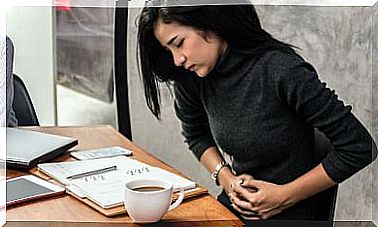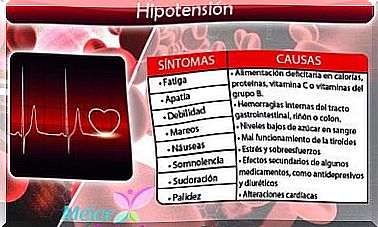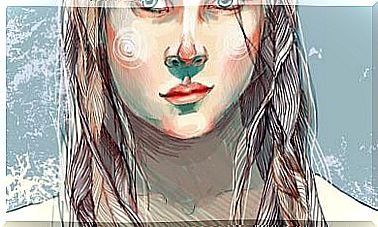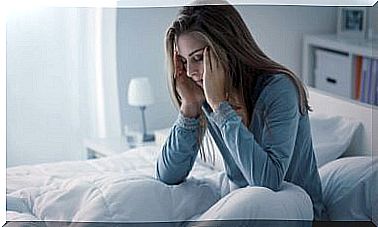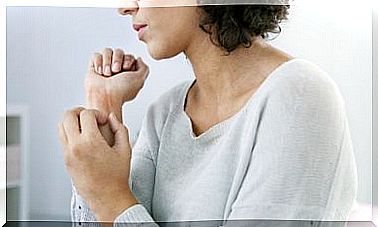Discover The 7 Types Of Anxiety: Workhorses That We Must Control
Anxiety is, without a doubt, that fierce workhorse that many of us are attached to for very long periods of time.
Now, when we talk about this psychological dimension, we often conceive it as a single construct, when in reality, there are different degrees, origins and personal situations.
From the psychological field, specialists differentiate 7 types.
Now, first of all, we must be clear about a very basic aspect: anxiety is a normal emotion.
Properly managed, it is the one that sets in motion our psychological mechanisms to face those situations of uncertainty where we have to give the best of ourselves.
However, often, fear itself overwhelms us and the brain unleashes a series of processes where we completely lose control.
We are sure that knowing these 7 types of anxiety will help you.
However, it is important to always remember that the moment we notice that we are losing control and that circumstances overcome us, we will need the help of a specialist.
1. Generalized anxiety disorder
Generalized anxiety disorder is the most common type of anxiety. It affects millions of people, and everyone, at some point, can experience this mental tension, this nervousness that, at first glance, does not have a specific origin.
- It is like living on the edge of an abyss, on the edges of a window before which the deepest uncertainty and the most agonizing emptiness open.
- We could say that it has several triggers: a job interview, having to talk to someone, changing a routine, doing something new …
However, more than a specific fact , generalized anxiety disorder has a root problem: living eternally worried.
These would be the symptoms:
- Constant restlessness, irritation, nervousness, or loss of control.
- Fatigue, frequent drops in energy.
- Tense muscles, especially in the back, neck and shoulders.
- Difficulty concentrating on tasks or activities.
- Obsessing over the negative, having catastrophic thoughts.
2. Social phobia

In this second type of anxiety, the constant focus of discomfort, restlessness and worry are, without a doubt, the social settings.
This category includes those people who dislike spaces with many people, especially if they have to carry out a task: speaking in public, making a debate, a presentation …
Even if they have to go to buy or return an item of clothing.
The symptoms would be the following:
- Feeling of fear and helplessness in unfamiliar people or situations.
- Obsession to feel observed and judged.
- Cold sweat, stuttering and emptiness in the stomach when we are introduced to someone new or we are in a scenario that we do not control before different people.
3. Panic disorder
Panic disorder is a very debilitating anxiety disorder. We talk about those moments when we have the clear feeling that we are going to die, that we are going to have a heart attack, an accident or that someone is going to hurt us.
We speak, in turn, of a feedback disorder: since we already know what the disorder and panic attacks are, we develop fear of experiencing them again.
Panic attacks are intense physical and mental sensations that are triggered by stress or curious as it may seem, for nothing at all.
It is something very complex that only someone who has experienced it can understand.
These would be the symptoms:
- Rapid heart beat
- Excessive sweating
- Numbness or weakness in the body.
- Depersonalization (feeling that we are outside of ourselves).
- Difficulty breathing.
- Feeling faint or dizzy.
- Chest pain or stomach pain.
- Digestive discomfort
4. Agoraphobia
We all know what agoraphobia is: fear of large spaces, of going beyond the threshold of certain known limits or entering unknown places.
Likewise, we must be clear that suffering agoraphobia does not mean that we cannot leave the house.
Many people with this type of anxiety do it, but they limit themselves to never leaving their personal routes: home-work-supermarket …
It should also be noted that agoraphobia is also joined by panic disorder. When seen in an open space, they experience the symptoms mentioned above.
5. Specific phobias

We all have some kind of specific phobia: fear of spiders, clowns, unpleasant sounds, thunder, knives …
These fears are considered normal, and they are until the mind begins to obsess over these aspects until the quality of our lives changes.
We stop going outside for fear, for example, of encountering spiders, that it will rain and lightning strikes, that a dog will bite us …
These would be the symptoms:
- Excessive and constant fear of something in particular.
- Immediate sense of threat or attack.
- Complete inability to control fears, despite knowing that they are irrational.
- Experience a complete restriction to our normal routine.
6. Post-traumatic stress disorder (PTSD)
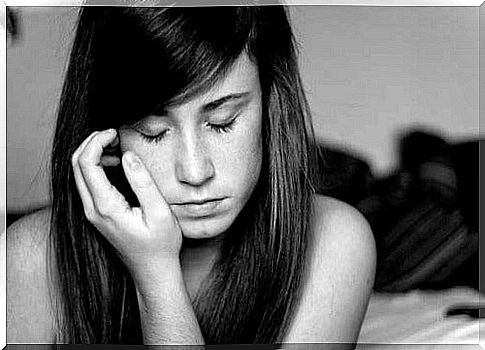
In this life, our safety is never guaranteed, just as it is never guaranteed that we will be respected, loved or protected.
The traumatic events of a childhood leave their mark. Also accidents, assaults, losses, seeing something shocking, as well as all those events that change us and hurt us inside and out.
The symptoms would be the following:
- Reliving the trauma: The most common symptom of PTSD is constantly reliving the trauma.
Often times, just one trigger is enough for us to remember that past event and relive all the suffering.
- Recurrence anxiety is another factor to consider. That traumatic event may soften over time, but it has clearly changed us.
- Anxiety will continue to be present in many details, in many daily areas: insomnia, fatigue, difficulty concentrating …
7. Obsessive Compulsive Disorder (OCD)
Obsessive compulsive disorder or OCD can be a very destructive anxiety disorder.
People who see it from the outside never understand why someone follows a series of rituals, hobbies, repetitive behaviors that, at first glance, make no sense …
It is also important to know how to differentiate compulsions from obsessions, because they are not the same. These would be the nuances that differentiate them and that, without a doubt, are worth knowing.
- Obsessions: Obsessions are concerns that revolve around a specific thought (almost always negative) that the person cannot let go of (they are going to hurt me, they are going to abandon me …).
- Compulsions: Compulsions, on the other hand, are based on behaviors. They are not thoughts, but rather the translation of these into a behavior that serves as a mechanism to alleviate fear.
Closing a lock 5 times makes me feel more secure, washing my hands many times will not infect me, but it will also give me more confidence in myself …
To conclude, the dimensions reflected here are clinical categories that would require a very specific type of treatment depending on the origin.
Anxiety, if it does not reach these levels, will be nothing more than a normal emotion that comes and goes and that we must manage appropriately.
Valeria Sabater
Graduated in Psychology from the University of Valencia in 2004. Master in Safety and Health at work in 2005 and Master in Mental System Management: neurocreativity, innovation and sixth sense in 2016 (University of Valencia). Collegiate number CV14913. He took the course Nutrition and obesity: overweight control, offered by the National Autonomous University of Mexico (UNAM). Student of Social and Cultural Anthropology at UNED, Valeria Sabater has worked in the area of social psychology selecting and training personnel. Since 2008, she has been a psychology and emotional intelligence trainer in secondary schools and offers psycho-pedagogical support to children with development and learning problems. In addition, she is a writer and has received various literary awards.
